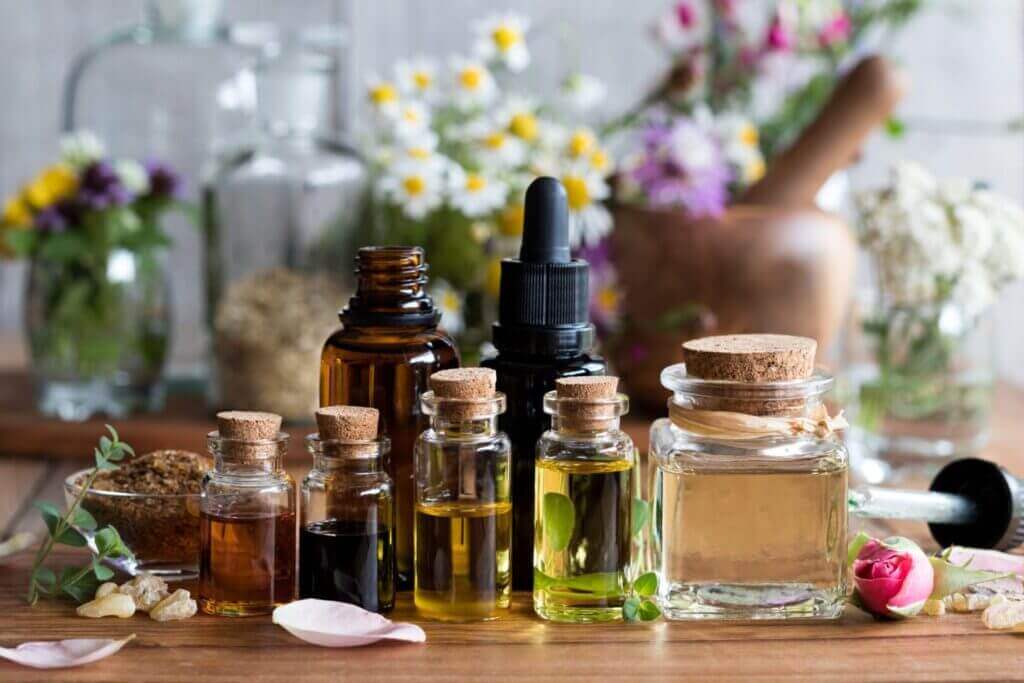
In the symphony of our senses, scent plays a mesmerizing melody. Fragrances evoke memories, spark emotions, and paint invisible landscapes around us. But in the fragrant world, two contrasting voices vie for our attention: natural and synthetic. Choosing between them becomes a delicate dance, one where understanding their true essence is the key to unlocking Wonderland, where you can free yourself from harmful self-care products, including fragrances.

Natural fragrances, like whispering secrets from Wonderland, are woven from the beautiful tapestry of nature. Essential oils, extracted from the essence of flowers, fruits, and herbs, form their heart and souls. Imagine the sweet sigh of a sun-kissed rose captured in a drop of its essential oil or the invigorating citrus burst of a freshly zested lemon, ready to be bottled. These scents carry the energy and soul of their origins, whispering tales of sun-drenched fields and dewy forests.

Synthetic fragrances, in contrast, are masterfully crafted in laboratories. Using sophisticated chemical pathways, scientists mimic the notes of natural scents or forge entirely new ones. Like alchemists of aroma, they weave a spell from a palette of synthesized molecules. While these creations can offer unparalleled precision and longevity, they lack the inherent life force and subtle variations found in nature’s bounty.

Beyond the enchanting notes, the choice between natural and synthetic transcends mere aesthetics. Concerns about potential toxicity and allergenicity have steered many towards the natural realm. Synthetic fragrances, while heavily regulated, can occasionally harbor hidden chemicals, some with potential health concerns.
Let’s take a look at some of the common synthetic chemicals found in so-called self-care and fragrance products.
· Phthalates– “In the past few years, researchers have linked phthalates to asthma, attention-deficit hyperactivity disorder, breast cancer, obesity and type II diabetes, low IQ, neurodevelopmental issues, behavioral issues, autism spectrum disorders, altered reproductive development and male fertility issues.”
· Benzene derivatives– “Exposure to benzene has been linked with a higher risk of cancer, particularly leukemia and other cancers of blood cells.”
· Formaldehyde– “is a highly toxic systemic poison that is absorbed well by inhalation. The vapor is a severe respiratory tract and skin irritant and may cause dizziness or suffocation. Contact with formaldehyde solution may cause severe burns to the eyes and skin.”
· Toluene– “is a colorless liquid with a sweet, pungent odor. Exposure to toluene can cause eye and nose irritation, tiredness, confusion, euphoria, dizziness, headache, dilated pupils, tears, anxiety, muscle fatigue, insomnia, nerve damage, inflammation of the skin, and liver and kidney damage.”
· Styrene– “Chronic (long-term) exposure to styrene in humans results in effects on the central nervous system (CNS), such as headache, fatigue, weakness, depression, CSN dysfunction, hearing loss, and peripheral neuropathy.”
· Methyl ethyl ketone– “The effects may be headaches, dizziness, fatigue, narcosis (acts like a narcotic), nausea, vomiting, and cause you to pass out. Methyl ethyl ketone vapor irritates the eyes, nose, and throat. Prolonged contact with the skin will cause irritation. Contact with the eyes can permanently damage them.”
· Butyl acetate– “Contact can irritate the skin and eyes. Breathing sec-Butyl Acetate can irritate the nose and throat, causing coughing and difficulty breathing. High exposure can cause headaches, nausea, vomiting, dizziness, drowsiness, and coma. Prolonged or repeated skin contact can cause cracking and drying of exposed areas.”
· Parabens– “can act like the hormone estrogen in the body and disrupt the normal function of hormone systems affecting male and female reproductive system functioning, reproductive development, fertility, and birth outcomes. Parabens can also interfere with the production of hormones.”
· Benzyl benzoate– “Blister formation, crusting, itching, oozing, reddening, or scaling of the skin, difficulty in urinating (dribbling), jerking movements, and/or sudden loss of consciousness.
Natural fragrances, while not entirely devoid of allergens, generally present a lower risk and often boast inherent therapeutic properties. A whiff of calming lavender or invigorating rosemary can uplift your mood and soothe your spirit, a testament to the inherent wellness woven into nature’s fragrant tapestries. While nature is generally safer than synthetic chemicals, it still doesn’t come without risks for some. Generally, the risk is in allergic reactions to terpenes like linalool, myrcene, beta-caryophyllene, and others. Most often, these allergies are known by the end consumer, whereas the dangers of synthetics and chemicals are vast, reaching far beyond potential allergic reactions.

Our choices often echo through the environment. Natural fragrances, when sourced responsibly, minimize the depletion of natural resources and the environmental footprint of fragrance production. Their cultivation can even support sustainable farming practices while nurturing a symbiotic relationship between nature and our fragrant desires.
Synthetic fragrances, while not inherently unsustainable, raise concerns about potential pollution and resource depletion during their production process. Choosing nature becomes a conscious step towards a fragrant future, one where scent and sustainability dance in harmony.

The beauty of natural fragrances lies in their captivating complexity. No two roses smell exactly alike, just as no two sunrises or snowflakes ever perfectly mirror one another. This subtle dance of variations, this whispering individuality, is the very essence of nature’s artistry.
Synthetic fragrances, while capable of impressive precision, can sometimes lack the depth and dynamism of their natural counterparts. Choosing natural is to embrace the unpredictable beauty of the real, the whispered stories carried on the wind, the ever-evolving melody of scent.
The choice between natural and synthetic fragrances is a personal one. There’s no right or wrong answer, but by understanding their differences and exploring the depths of the natural world, you can forge a fragrant journey that resonates with your values and your spirit. Let the symphony of scent guide you on this beautiful and fragrant discovery. Might we suggest reaching for the Higher Good Natural Fragrance Roll-On to start your journey?

Self-care should be a positive experience. The dangers associated with the chemicals used in so many popular brands are driving people in a new direction. That new direction is towards nature. Unlock Wonderland with natural, responsibly sourced self-care products like the ones featured by Potency No. 710. Nature is good for the mind, body, and spirit. Learn about the benefits of natural self-care products to find your key to Wonderland.